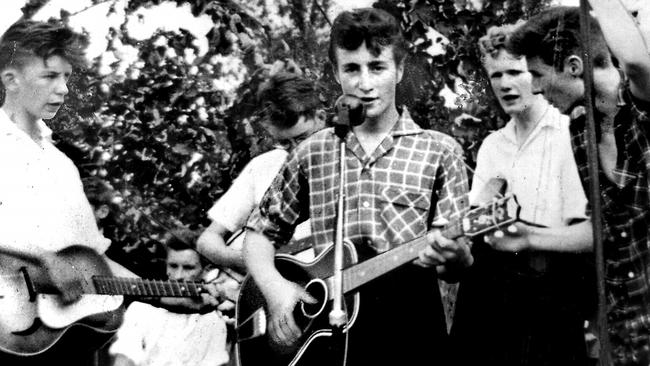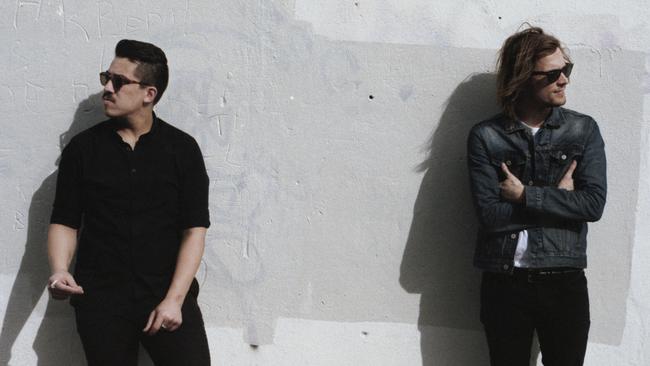Roots, Radicals and Rockers by Billy Bragg: the skiffle effect
Billy Bragg delivers a first-rate account of a phenomenon that transformed British popular music.

In his engrossing autobiography Born to Run, Bruce Springsteen acknowledges that one of the first records to make an impression on him was Rock Island Line by British singer Lonnie Donegan. The Boss would have been six years old when that single, a reworking of an old American folk song recorded by Lead Belly in the 1930s, became a top 10 hit in the US and Britain in 1955.
What Springsteen may not have realised back then is that Donegan, a banjo player in London-based Chris Barber’s Jazz Band before that single brought him fame, was at the forefront of a force that would revolutionise the British music industry: skiffle.
A stripped-back acoustic form that most commonly consisted of vocals, acoustic guitar, tea-chest bass and washboard, skiffle was the music that tore apart the accepted, stale conservatism of bow-tied balladeers and safe-as-houses big bands that dominated the airwaves in postwar Britain.
Its influence, much like the punk revolution 20 years later, is landmark.
The Beatles, Van Morrison, Jimmy Page, the Rolling Stones and David Bowie are a few of the acts whose early development came within the simple confines of skiffle music, which during its brief tenure in the 50s ushered in rock ’n’ roll.
Billy Bragg, the Bard of Barking whose singing career was launched on the back of that punk explosion in the 70s, saw the parallels that could be drawn between punk and the skiffle movement. Both enabled young people who considered becoming professional musicians a mere fantasy to use three chords and basic instrumentation to create music that talked to their generation.
In Roots, Radicals and Rockers: How Skiffle Changed the World, Bragghas done a remarkable job of tracing the roots of skiffle, explaining in great and entertaining detail its complicated journey from the cotton fields of the American south in the form of folk and blues music and its incubation in the jazz clubs of Chicago and New Orleans in the early part of the 20th century.
All of that music had an influence on young British musos keen to play and listen to something other than the conservative fare served up by the BBC.
Skiffle’s name comes from a term used to describe rent parties in Chicago in the 1920s and 30s, when poor black communities would hold such gatherings to raise sufficient funds to keep the landlord at bay, with musicians the main drawcard.
Bragg traces skiffle’s origins through key figures from the British jazz scene in the 40s and 50s — musicians such as bandleader Ken Colyer, a merchant seaman who travelled to the US to experience the jazz music emerging from New Orleans.
This early part of the book is a fascinating exercise in connecting the dots on the history of jazz and folk music, particularly in the US. Bragg is in comfortable territory here and writes with a passion that brings the music and the musicians to life.
It’s a story also of how Britain, even a decade after the end of World War II, was still waiting for the days of rationing and hardship to be swept away on a wave of prosperity. Skiffle didn’t exactly bring that about, but it came at a time when teenagers were looking for something new that didn’t reflect the tough times their parents had gone through.
Though the rise of skiffle is seen primarily through the prism of Donegan, who was to Britain what Elvis Presley was to the US, the phenomenon extended way beyond him. Skiffle bands formed all across the country, skiffle competitions were a daily occurrence and sales of guitars increased 100-fold at the peak of Donegan’s success. (By the end of the decade, Donegan had moved on from being the radical music poster boy to becoming a pop star whose biggest hits included My Old Man’s a Dustman and Does Your Chewing Gum Lose Its Flavour on the Bedpost Overnight?)
The heart of Bragg’s story, however, is in his vivid plotting of how this music, which drew in part on the songbooks of Lead Belly, Woody Guthrie and other, lesser-known American artists, evolved in the coffee houses and small clubs of central London, where bands such as the Vipers and the Ghouls performed for duffel-coated teenagers.
Through his documenting of skiffle’s evolution, Bragg does a great job of placing it in the larger context of the social and cultural change that was on Britain’s doorstep at the time. Youth culture as we know it was just being invented and from that period onwards music, be it skiffle, pop or rock ’n’ roll, was going to be an important element of it.
By 1959 the skiffle bubble had burst. Donegan and others had moved on, as had the nation’s youth, to pop music and rock ’n’ roll. The music that was recorded and released in skiffle’s heyday is largely forgotten, although there are compilations of some of the best examples, and Donegan’s skiffle catalogue lives on.
Without skiffle, however, what would have come afterwards is anyone’s guess. Imagine if, after playing a handful of Donegan songs with his skiffle band the Quarrymen at a church fete in 1957, John Lennon hadn’t been introduced to Paul McCartney? That moment alone is one reason we should be grateful that skiffle happened. And we should be grateful also to Bragg, who has delivered a first-rate account of a phenomenon that somehow has received little attention in the 60 years that have elapsed since its passing.
Iain Shedden is The Australian’s music writer.
Roots, Radicals and Rockers: How Skiffle Changed the World
By Billy Bragg
Faber, 448pp, $39.99


